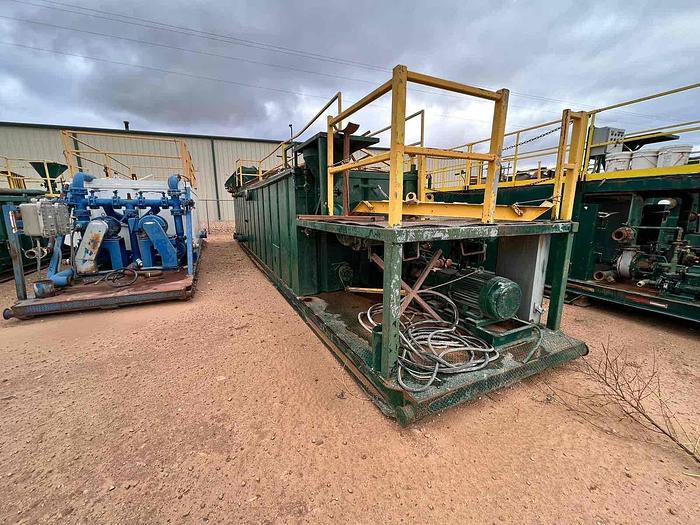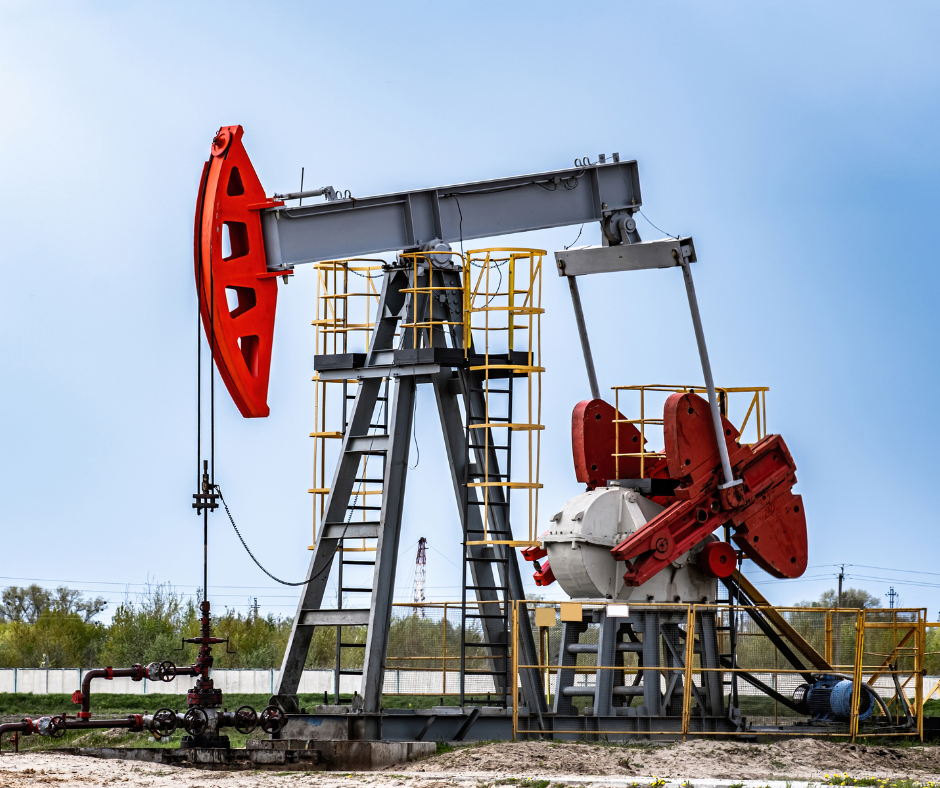 In the realm of drilling operations, mud tanks stand as unsung heroes, quietly supporting the intricate processes that unfold beneath the earth's surface. While they may not boast the glamor of towering derricks or the precision of cutting-edge drilling technology, mud tanks play a pivotal role in ensuring the efficiency, safety, and success of drilling endeavors. But what exactly are mud tanks, and why are they indispensable to the drilling industry?
In the realm of drilling operations, mud tanks stand as unsung heroes, quietly supporting the intricate processes that unfold beneath the earth's surface. While they may not boast the glamor of towering derricks or the precision of cutting-edge drilling technology, mud tanks play a pivotal role in ensuring the efficiency, safety, and success of drilling endeavors. But what exactly are mud tanks, and why are they indispensable to the drilling industry?
In the meticulously orchestrated world of drilling—where every second counts and efficiency is the linchpin of success—the role of mud tanks is both central and transformative. If you’re ready to add an extra boost of power to your upcoming drilling job, it’s time to invest in an industry-leading mud tank. When you’re looking for a used mud tank that offers seamless workflow with all the power you need to get the job done right the first time, trust the experienced team at Power Drive Supply to elevate your professional game. Connect with our experienced experts today and get your mud tank questions answered!
What Are Mud Tanks?
At its core, a mud tank is a large, steel-constructed container designed to hold and circulate drilling fluid, commonly known as drilling mud. This specialized fluid serves a multitude of purposes throughout the drilling process, ranging from cooling and lubricating the drill bit to carrying rock cuttings to the surface and maintaining pressure within the wellbore. However, managing this crucial fluid requires more than just pouring it into a pit; it demands meticulous control, filtration, and recycling—a task entrusted to mud tanks.
Imagine a bustling hub of activity at a drilling site, with rigs towering overhead and machinery humming ceaselessly. Amidst this organized chaos, mud tanks stand as the silent sentinels, efficiently managing the ebb and flow of drilling fluid. Typically arranged in a series of interconnected tanks, they form a cohesive system that facilitates the continuous circulation and purification of drilling mud.
One of the primary functions of mud tanks is to act as storage reservoirs for drilling fluid. As the drilling process progresses, vast quantities of mud are pumped into the wellbore to facilitate the removal of cuttings and maintain hydrostatic pressure. Mud tanks provide the necessary capacity to store this fluid, ensuring a steady supply is readily available for circulation when needed.
Moreover, mud tanks serve as a crucial component of the solids control system—a series of equipment designed to remove solid particles and contaminants from the drilling mud. Within the confines of these tanks, various mechanisms, such as shale shakers, hydrocyclones, and centrifuges, work in concert to separate undesirable solids from the fluid, thereby enhancing its performance and longevity.
In addition to storage and solids control, mud tanks also play a vital role in regulating the properties of drilling mud. Through the strategic addition of additives and chemicals, operators can manipulate the viscosity, density, and lubricity of the mud to suit the specific demands of the drilling environment. Mud tanks provide a centralized platform for mixing and conditioning the fluid, ensuring that it meets the stringent requirements dictated by the drilling operation.
Furthermore, mud tanks serve as a critical safety buffer, particularly in challenging drilling environments such as offshore rigs or environmentally sensitive areas. By containing and recycling drilling mud, they minimize the risk of accidental spills or contamination, safeguarding both the environment and personnel working on the site.
Where Are Mud Tanks Used?
Mud tanks are a fundamental component in various industries, particularly in sectors where drilling operations are prevalent. Their versatile functionality makes them indispensable in environments ranging from oil and gas exploration to civil engineering projects. Let's delve into their significance across different domains:
1. Oil and Gas Exploration:
Offshore Drilling Platforms: Mud tanks are extensively utilized on offshore drilling rigs, where space is often limited, and operations are conducted in challenging marine environments. These tanks play a pivotal role in storing, circulating, and conditioning drilling mud, ensuring the smooth progress of drilling operations.
Onshore Drilling Sites: Similarly, onshore drilling sites rely on mud tanks to manage drilling fluids efficiently. Whether in remote deserts or densely populated areas, these tanks provide a centralized hub for handling drilling mud, enhancing operational efficiency and safety.
2. Mining Industry:
Mineral Exploration: In the mining sector, mud tanks find applications in mineral exploration activities such as core drilling and borehole drilling. By facilitating the circulation and purification of drilling fluids, these tanks aid in extracting valuable resources from beneath the earth's surface.
3. Geotechnical Engineering:
Foundation Construction: Mud tanks play a crucial role in geotechnical engineering projects, particularly during the construction of foundations for structures such as bridges, dams, and skyscrapers. By maintaining the stability of drilling fluids, these tanks support soil stabilization and excavation processes.
4. Environmental Remediation:
Contaminated Site Cleanup: In environmental remediation efforts, mud tanks are employed to contain and treat contaminated soil and groundwater. By separating pollutants from drilling fluids, these tanks facilitate the remediation of polluted sites, contributing to environmental sustainability.
What Are Mud Tanks in Oil and Gas?
 In the oil and gas industry, mud tanks serve as essential components of drilling operations, playing a multifaceted role in ensuring the success and safety of exploration activities. Here's an in-depth look at their significance in the realm of oil and gas:
In the oil and gas industry, mud tanks serve as essential components of drilling operations, playing a multifaceted role in ensuring the success and safety of exploration activities. Here's an in-depth look at their significance in the realm of oil and gas:
1. Storage and Circulation of Drilling Fluids:
Capacity: Mud tanks provide ample storage capacity for drilling fluids, accommodating the vast quantities required for drilling operations. They serve as reservoirs from which drilling mud is pumped into the wellbore, facilitating the removal of cuttings and maintaining hydrostatic pressure.
Continuous Circulation: These tanks support the continuous circulation of drilling fluids, enabling the efficient cooling and lubrication of drill bits while carrying rock cuttings to the surface. By ensuring a steady supply of fluid, mud tanks optimize drilling efficiency and productivity.
2. Solids Control and Filtration:
Solid Removal: Mud tanks are integral to the solids control system, which encompasses equipment such as shale shakers, hydrocyclones, and centrifuges. Within these tanks, solid particles and contaminants are separated from the drilling mud, preventing equipment damage and maintaining drilling fluid properties.
Enhanced Performance: By effectively filtering out solids, mud tanks enhance the performance and longevity of drilling fluids, minimizing downtime and maximizing operational efficiency. This process also mitigates the risk of wellbore instability and formation damage.
3. Fluid Conditioning and Quality Control:
Additive Incorporation: Mud tanks serve as centralized hubs for mixing and conditioning drilling fluids, allowing operators to adjust viscosity, density, and lubricity as per the specific requirements of the drilling environment. Through the strategic addition of additives and chemicals, the properties of the mud can be tailored to optimize drilling performance.
Quality Assurance: By maintaining strict control over drilling fluid composition, mud tanks ensure the integrity and reliability of wellbore operations. Quality control measures implemented within these tanks safeguard against fluid degradation and maintain consistent performance throughout the drilling process.
Mud Tanks on a Drilling Rig?
On a drilling rig, mud tanks are the backbone of drilling operations, providing essential support and functionality that is integral to the success of the endeavor. Here's a detailed overview of their role and configuration on a typical drilling rig:
1. Layout and Arrangement:
Interconnected System: Mud tanks are arranged in a series of interconnected compartments, forming a cohesive system that facilitates the storage, circulation, and conditioning of drilling fluids. These tanks are strategically positioned on the rig to optimize space utilization and operational efficiency.
Tiered Design: In many cases, mud tanks are arranged in multiple tiers or levels, with pumps and processing equipment located on elevated platforms for ease of access and maintenance. This tiered design maximizes the use of vertical space while minimizing the rig's footprint on the drilling site.
2. Functionality and Operation:
Storage and Distribution: Mud tanks serve as primary storage reservoirs for drilling fluids, receiving mud from mixing units and providing a continuous supply to the drilling operation. Pumps and agitators within the tanks facilitate the circulation and distribution of mud throughout the rig.
Solids Control Equipment: Integrated within the mud tank system are various solids control and filtration equipment, including shale shakers, de-sanders, and de-silters. These components work in tandem to remove solid particles and contaminants from the drilling fluid, maintaining its quality and performance.
Fluid Conditioning: Mud tanks are equipped with mixing units and agitation systems to facilitate the blending and conditioning of drilling fluids. Additives and chemicals are introduced into the mud to adjust its properties, ensuring optimal performance in diverse drilling conditions.
3. Safety and Environmental Considerations:
Containment Measures: Mud tanks are designed with robust containment features to prevent spills and leaks, minimizing the risk of environmental contamination and ensuring regulatory compliance. Secondary containment systems and overflow prevention measures are implemented to safeguard against potential hazards.
Emergency Response: Rig personnel are trained to respond swiftly to any incidents or emergencies involving mud tanks, with contingency plans in place to mitigate risks and minimize disruptions to drilling operations. Regular inspections and maintenance protocols further enhance safety and environmental stewardship.
Used Mud Tanks for Sale with Power Drive Supply
In essence, mud tanks are indispensable components of drilling rigs, serving as the nerve center for the management and control of drilling fluids. Their multifunctional capabilities, coupled with stringent safety and environmental standards, underscore their critical role in ensuring the efficiency, reliability, and sustainability of drilling operations in the oil and gas industry.
If you're looking to elevate your operation's performance and ensure that you stay ahead in the competitive drilling landscape, investing in a high-quality mud tank system is a strategic move that positions you for success. Maximize your operational potential with Power Drive Supply—because when efficiency and efficacy are non-negotiable, the right tools make all the difference. Power up your professionalism with our crew today at (406) 461-3275!
(Worried about funding your mud mixing tank? No problem. We even offer financing!)
